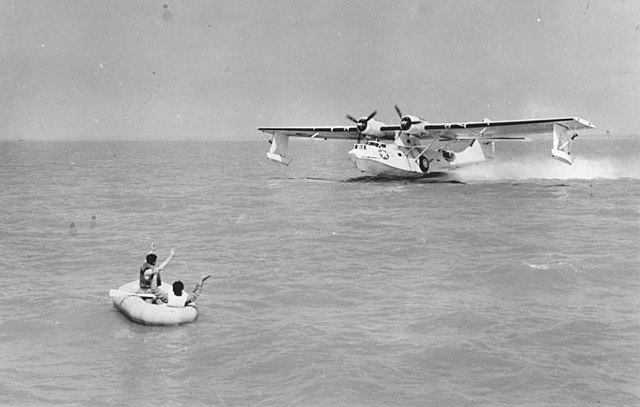An amphibious helicopter is a helicopter that is intended to land on and take off from both land and water. Amphibious helicopters are used for a variety of specialized purposes including air-sea rescue, marine salvage and oceanography, in addition to other tasks that can be accomplished with any non-amphibious helicopter. An amphibious helicopter can be designed with a waterproof or water-resistant hull like a flying boat or it can be fitted with utility floats in the same manner as a floatplane.
An HH-3F Pelican helicopter of the United States Coast Guard lands on the water near a burning boat.
A Canadian Forces CH-124 Sea King shows its boat hull, sponsons and wheeled landing gear.
A Vertol HUP Retriever lands on water
A Sikorsky Sea King with an added inflatable emergency float outboard of the standard sponson, intended to increase flotation time
Air-sea rescue, and aeronautical and maritime search and rescue (AMSAR) by the ICAO and IMO, is the coordinated search and rescue (SAR) of the survivors of emergency water landings as well as people who have survived the loss of their seagoing vessel. ASR can involve a wide variety of resources including seaplanes, helicopters, submarines, rescue boats and ships. Specialized equipment and techniques have been developed. Both military and civilian units can perform air-sea rescue. Its principles are laid out in the International Aeronautical and Maritime Search and Rescue Manual. The International Convention on Maritime Search and Rescue is the legal framework that applies to international air-sea rescue.
A Royal Navy rescue helicopter in action above a boat
An Auckland Rescue Helicopter in action
The PBY Catalina was one of the most popular flying boats used for air-sea rescue.
The Type Two 63 ft High-speed launch, designed by Hubert Scott-Paine in 1937.








